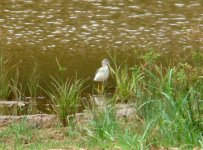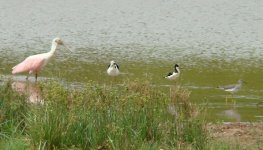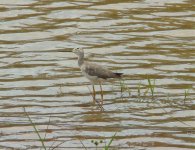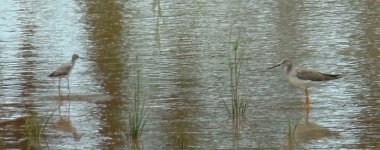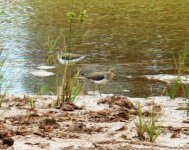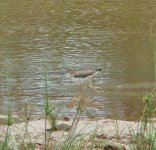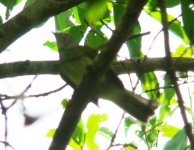jocateme
Well-known member
Here are some birds seen in Eldorado, S Mato Grosso do Sul state, CW Brazil. I'm having some trouble to identify them, so I'd appreciate any help.
I'll begin with some Tringa spp. (or is it just one sp.?):
1 - Seems to me Tringa flavipes.
2 - Same bird, same guess (+Roseate Spoonbill and White-backed Stilt).
3 - Taken in the same place, after about an hour. I'm leaning towards T. melanoleuca.
4 - After the bird in picture #3 flew away, another one (presumably Tringa sp.) nearby flew with it, and they both perched in the other side of the lake, where they are standing in this picture (#4). Either I have to improve my sense of scale or these are two different species.
5 - When I saw this picture on my screen, I got really confused. These two birds don't look like any of the ones I had photographed (#1-#4), do they? The upperwing seem somewhat more conspicuous...
I hope some expert on Yellowlegs can help with these ones, even though the photos don't do it pretty well!
Cheers all!
I'll begin with some Tringa spp. (or is it just one sp.?):
1 - Seems to me Tringa flavipes.
2 - Same bird, same guess (+Roseate Spoonbill and White-backed Stilt).
3 - Taken in the same place, after about an hour. I'm leaning towards T. melanoleuca.
4 - After the bird in picture #3 flew away, another one (presumably Tringa sp.) nearby flew with it, and they both perched in the other side of the lake, where they are standing in this picture (#4). Either I have to improve my sense of scale or these are two different species.
5 - When I saw this picture on my screen, I got really confused. These two birds don't look like any of the ones I had photographed (#1-#4), do they? The upperwing seem somewhat more conspicuous...
I hope some expert on Yellowlegs can help with these ones, even though the photos don't do it pretty well!
Cheers all!
Attachments
Last edited:




